CANNABIS PHYSIOLOGICAL TESTING [aka --Trying it on the Dog]
Variations in BOTANICAL MEDICINES:
All Plant matter (meaning all botanical drugs) varies in strength/potency levels from plant to plant. This is the very nature of botanical herbs and plants. Just ask any gourmet cook about the use of herbs and spices and almost all of them will state that their recipes are only a reference/starting point. That one must vary the ingredients according to the tastes.
[Picture of some guy with a lab coat]
[He is standing over some scientific looking equipment]
Today with spectrum analyzers and photo-optical techniques it is relatively a simply matter to standardized botanical medicines. But what about the 1880's, before these instruments were even invented. How did they standardize botanical drugs back them?
Pamphlet from the Laboratories of Parke Davis Co.

Pharmaceuticals Physiologically Proved. In addition to the ordinary equipment of a first class chemical laboratory for research work, it is necessary to have various pieces of apparatus for determining the action of medical agents upon the different organs of the animal body. For satisfactory work the following will be found absolutely essential.
For investigating the action upon blood-pressure, heart, respiration, etc., of such drugs as digitalis, stronphanthus and other heart tonics, nitrites, nitrates, chloroform, etc., we must have a Ludwig or some other form of Kymograph. A modified Ludwigh Kymograph is probably the most useful, as the separate drums may be used for all kinds of work requiring graphic tracings. For appearance of this apparatus as used in various kinds of work, see Figs. 1,2, 3 and 5. After determining the action of certain drugs upon the blood-pressure, it is necessary to find whether this action is upon the centers located in the brain or spinal cord, upon the walls of the blood- vessels themselves, upon the nervous or muscular elements of the heart, etc. For investigating the action of drugs upon the blood-vessels themselves, Freaser's method of perfusion is the best. by this method the quantity of normal saline solution that will pass through the circulated with a given pressure in short periods of time can be determined. Then, on the addition of the drug to the saline solution it can be told whether there is an increase or decrease in the amount of fluid passing through the circulation. digitalis causes a marked contraction, while sodium nitrite causes a marked dilatation, of the vessels. In order to determine whether the action of the drug is upon the muscular fibers or nervous elements of the heart itself, the laid-bare frog's heart is generally employed (Fig.2). If we wish to study the influence of the drug upon the elasticity and contractility of the heart, Willams' apparatus will be found very useful (Fig. 5).
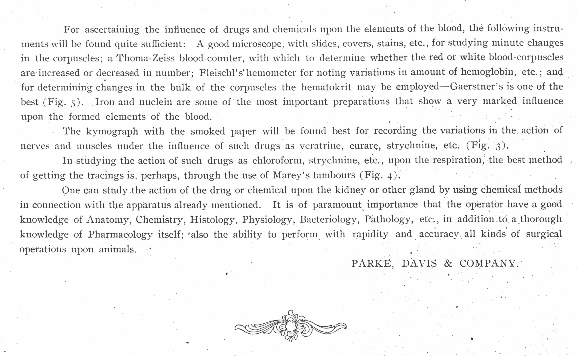
For ascertaining the influence of drugs and chemicals upon the elements of the blood, the following instruments will be found quite sufficient: A good microscope, with slides, covers, stains, etc., for studying minute charges in the corpuscles; a Thoma-Zeiss blood counter, with which to determine whether the red or white blood-corpuscles are increased or decreased in number; Fleishl's' hemometer for noting variations in amount of hemoglobin, etc; and for determining changes in the bulk of the corpuscles the hematokrit may be employed---Gaerstner's is one of one of the best (Fig. 5). Iron and nuclein are some of the most important preparations that show a very marked influence upon the formed elements of the blood.
The kymograph with the smoke paper will be found best for recording the variations in the action of nerves and muscles under the influence of such drugs as veratrine, curare, strychnine, etc. (Fig. 3).
In studying the action of such drugs as chloroform, strychnine, etc., upon the respiration, the best method of getting the tracings is, perhaps, through the use of Marey's tambours (Fig. 4).
One can study the action of the drug or chemical upon the kidney or other gland by using chemical methods in connection with the apparatus already mentioned. It is of paramount importance that the operator have a good knowledge of Anatomy, Chemistry, Histology, Physiology, Bacteriology, Pathology, etc., in addition to a through knowledge of Pharmacology itself; also the ability to perform with rapidity and accuracy all kinds of surgical operations upon animal. PARKE DAVIS & COMPANY

FIG. I.---Modified Ludwig Kymograh, for recording action of drugs upon blood-pressure, heart and respiration.
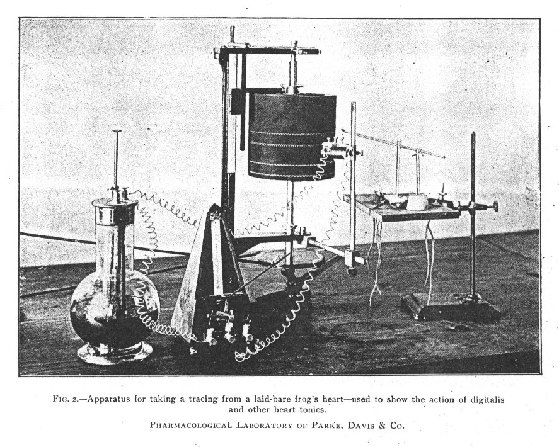
FIG. 2.---Apparatus for taking a tracing from a laid-bare frong's heart---used to show the action of digitalis and other heart tonics.
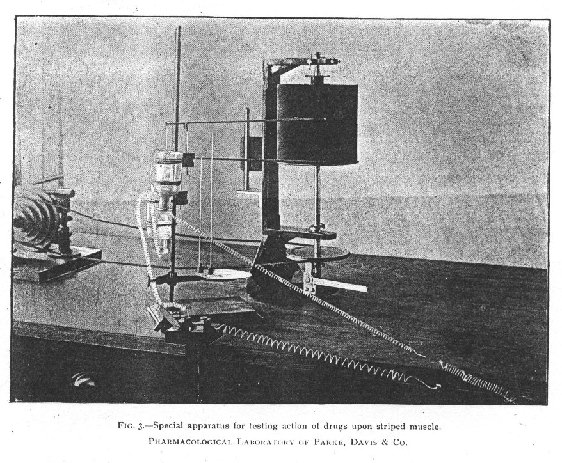
FIG 3.---Special apparatus for testing action of drugs upon striped muscle.
PHARMACOLOGICAL LABORTORY OF PARKE, DAVIS & CO.

FIG 4.---View of chemical portion of Parke, Davis & Co.'s Pharmacological Laboratory
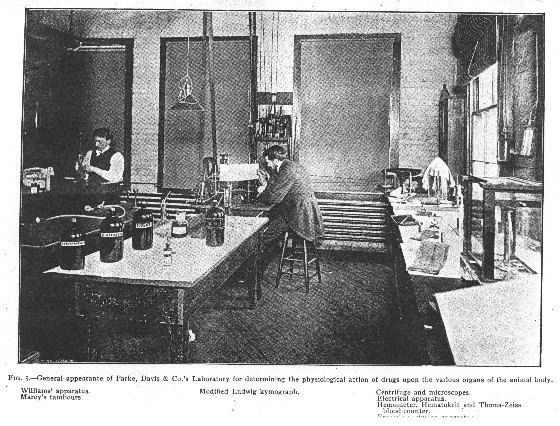
FIG. 5.---General appearance of Parke, Davis & Co.'s Laboratory for determining the physiological action of drugs upon the various organs of the animal body. Williams' Apparatus ; Marey's tambours ; Modified Ludwig kymograph; Electrical apparatus.; Hemometer ; Hematokrit and Thoma-Zeiss;
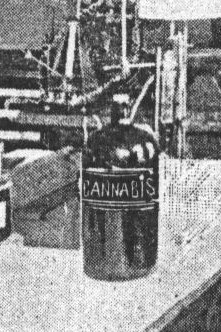
Cannbis Bottle from FIG 5.

It is very easy to run away with the notion that the manufacturer's prices for finished pharmaceuticals are excessive and disproportionate to the market value of the crude material. Occasionally a customer tells us frankly that such is his opinion. When this complaint comes from a candid and reasonable man, we have little difficulty in setting ourselves right in his eyes, simply by presenting a few facts with which those not versed in our methods cannot possible be familiar. Many elements of expensed must be added to the market price of all crude drugs in estimating their cost. Thus in the first place, there is the garbling. Some drugs contain in every parcel more or less foreign admixture---stuff picked up by the gatherers and requiring careful elimination by our millers.
Other drugs, notably burdock rook, despite the utmost care, will become infested with worms.
These unfit portions must be removed and destroyed. A minor source of expense, too, is the loss of weight which attends the grinding. All these things cost money.
Then there are drugs and drugs. So, also, there are costs and costs.
We seek and find and buy the choicest qualities, and we have to pay accordingly. With a drug like Indian Cannabis, for example, the range of qualities is extraordinary, and the prices show a corresponding fluctuation. Only a little while ago we had to reject a parcel of 1,200 pounds. The cannabis looked nice, but proved inert when tested physiologically on animals; and this testing of from six to a dozen samples requires time and expense.
Supposing the best parcel of an important drug that we can possibly obtain falls short of our chemical or physiological standard. This happens at times---what then? We simply have to use an excess---more than sixteen ounces to the pound---to render our fluids "full strength" and "up to standard." PARKE, DAVIS & COMPANY.
WANT TO KNOW MORE:
Due to download/space limitations, it is all but impossible to display the hundreds of Cannabis Antique Pictures that the museum has accumulated. However, they are available on CD-ROM. Please contact the museum for more info.
 BACK TO MAIN INDEX PAGE |
 On to the Newspaper Article |